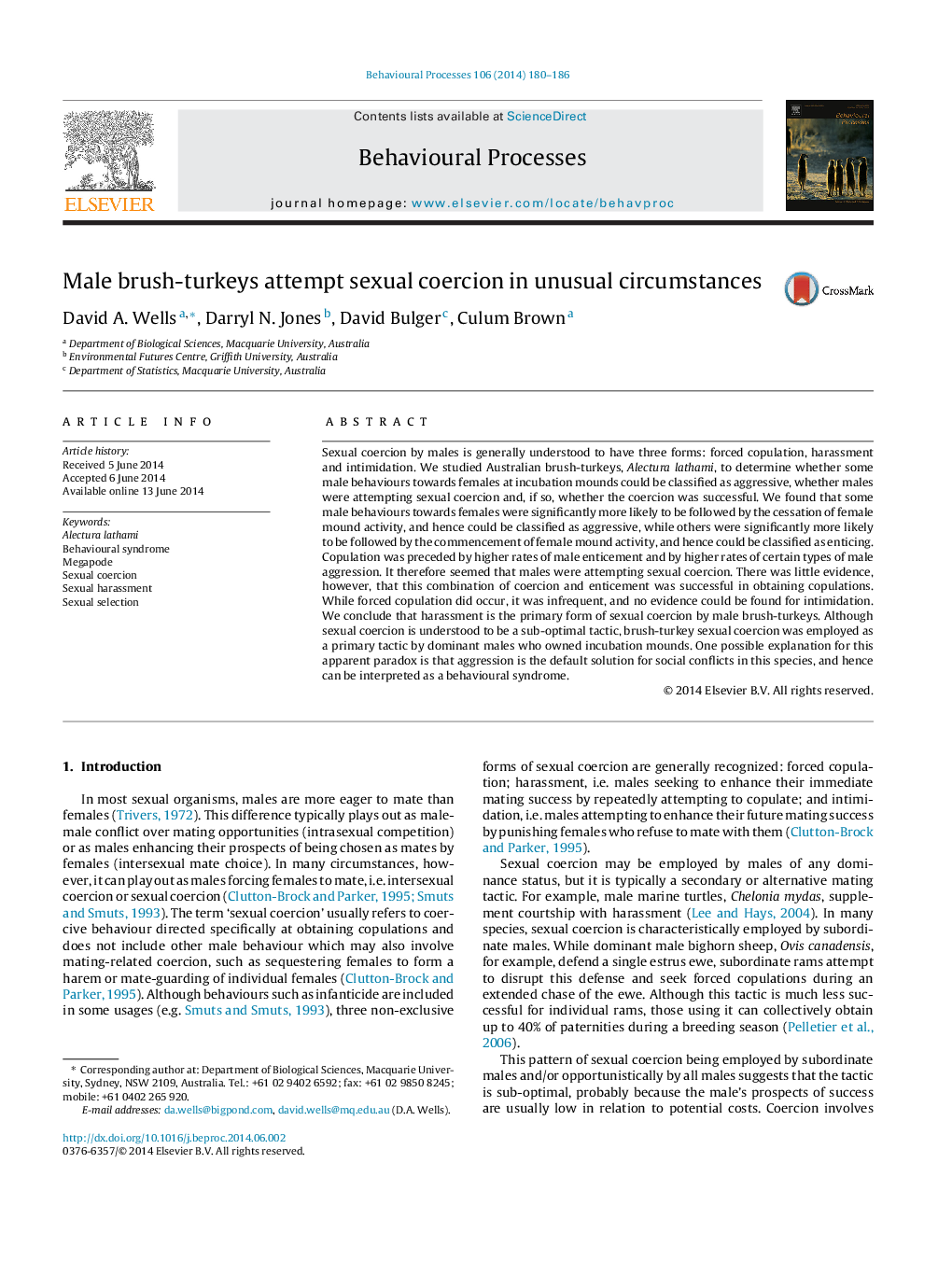| کد مقاله | کد نشریه | سال انتشار | مقاله انگلیسی | نسخه تمام متن |
|---|---|---|---|---|
| 2426676 | 1553173 | 2014 | 7 صفحه PDF | دانلود رایگان |
Sexual coercion by males is generally understood to have three forms: forced copulation, harassment and intimidation. We studied Australian brush-turkeys, Alectura lathami, to determine whether some male behaviours towards females at incubation mounds could be classified as aggressive, whether males were attempting sexual coercion and, if so, whether the coercion was successful. We found that some male behaviours towards females were significantly more likely to be followed by the cessation of female mound activity, and hence could be classified as aggressive, while others were significantly more likely to be followed by the commencement of female mound activity, and hence could be classified as enticing. Copulation was preceded by higher rates of male enticement and by higher rates of certain types of male aggression. It therefore seemed that males were attempting sexual coercion. There was little evidence, however, that this combination of coercion and enticement was successful in obtaining copulations. While forced copulation did occur, it was infrequent, and no evidence could be found for intimidation. We conclude that harassment is the primary form of sexual coercion by male brush-turkeys. Although sexual coercion is understood to be a sub-optimal tactic, brush-turkey sexual coercion was employed as a primary tactic by dominant males who owned incubation mounds. One possible explanation for this apparent paradox is that aggression is the default solution for social conflicts in this species, and hence can be interpreted as a behavioural syndrome.
Journal: Behavioural Processes - Volume 106, July 2014, Pages 180–186
